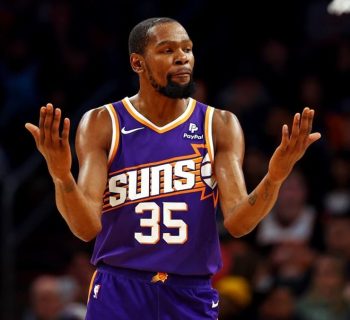NBA
NBA Daily: Could Isaiah Thomas Catapult Nuggets?

Isaiah Thomas was an elite player only two seasons ago. It was around then that he said Danny Ainge and the Celtics had better “bring out the Brinks truck.” But a lot has changed since then.
In the spring of 2017, Thomas suffered a right femoral-acetabular impingement with a bruised hip and torn labrum. He attempted to rehab the injury. He was traded from Boston to Cleveland. He had a mostly unsuccessful return from the injury with the Cavs.
Thomas was then traded to the Lakers, where he played pretty well (16.9 points per game in March 2018) prior to experiencing a setback in the form of stiffness in his previously injured hip. Shortly after that, he opted for surgery. Amidst his rehab from surgery, Thomas signed a one-year deal with the Nuggets this past offseason, but has yet to play.
According to Dr. Marc Philippon via ESPN writer Tom Haberstroh’s piece from September 2017, the injury had been misdiagnosed as a groin injury – in fact, until recently, injuries like these have been misdiagnosed as a groin issue regularly due to the similarity in symptoms. Since 2010, only 13 surgeries were performed on NBA players to repair torn labrums, all of which were conducted by Dr. Philippon.
Other players who had similar (labrum) injuries include Jonny Flynn, Gerald Henderson (both hips), LaMarcus Aldridge, Wilson Chandler (both hips), Kevon Looney and Martell Webster. The list isn’t terribly long and, therefore, doesn’t provide much context regarding Thomas’ injury and how he might recover. Chandler and Aldridge came back at least as good as prior to the injury – but were younger at the time of the initial injury and underwent surgery sooner after it. Flynn and Webster had less luck.
Therefore, it is debatable at best that Thomas will return to his pre-injury form. Last season (post injury) he averaged 15.2 points in 26.9 minutes per game. He shot a pretty dismal 29.3 percent from downtown on 5.9 attempts per game. But he clearly wasn’t healthy, nor was he happy to have been traded to the Cavs.
However, looking back just two seasons, Thomas averaged a career-best 28.9 points per game and led the Celtics to the number one seed in the Eastern Conference. So which version of Thomas can we expect upon his return? And speaking of his return, when might that be?
Before we get into how and when, let’s examine why. Why would the Nuggets rush Thomas back? Simply put, they won’t. Without Thomas, the Nuggets look quite formidable. They have the best record in the West and the second-best record in the entire league. They score the sixth most points per 100 possessions and they are ranked sixth in both offensive rating and net rating (point differential per 100 possessions). So it appears that Thomas can rehab at his own pace and come back only when fully healthy.
What role does Thomas have to look forward to? It’s hard to say exactly how he’ll be worked into the rotation, but the Nuggets could certainly use his fearlessness and three-point range. Though they’re already sixth in points per 100 possessions, points per game is a different story.
Denver ranks 13th in points per game. Furthermore, they don’t shoot enough threes to keep pace with the likes of the Warriors – and if we’re being honest, that’s who they’ve got their eyes on. In fact, they’re only 17th in the league in three-point attempts (30.9) and 16th in three-point percentage (.350). And, despite the Nuggets offensive efficiency, they play at the fourth-slowest pace in the league (96.7).
Insert Isaiah Thomas. Let’s fight the urge to assume a return to 2016-17 numbers. Thomas is still a 36.1 percent career three-point shooter who averages 5.4 three-point attempts per game. And his 2017-18 production is probably the least you can expect from Thomas. After all, he shot at least 34.5 percent from deep in each of his seven other professional seasons.
Presently, there is no timetable for Thomas’ return to action. Back in November, ESPN’s Adrian Wojnarowski tweeted, “Isaiah Thomas should join bench unit sometime in December.” But December has come and gone and Thomas is still out. There is also no evidence that he is even practicing with the Nuggets yet.
When he does return, Thomas’ role will almost certainly be limited. But there will be opportunities. His signing was a relatively low-risk move for the Nuggets, especially considering it was for the veteran’s minimum.
Thomas can be a closer and a difference maker off the bench. He can provide an added scoring punch when Jamal Murray and/or Nikola Jokic are off the floor, and he can help space the floor as a three-point threat when playing off the ball. Monte Morris – Denver’s current backup point guard – will probably be displeased at having a slightly reduced role, but he won’t have to worry about opportunities beyond this season considering how well he’s performed so far in his first real season in the league.
If, for whatever reason, Thomas doesn’t work out or fit with the team, his salary comes off the books at the end of the season. But in the event that he does work out – which becomes a longer shot with every passing month– the Nuggets could have a perfect complement to their existing roster.
And one who can propel them deeper into the playoffs than ever before.













